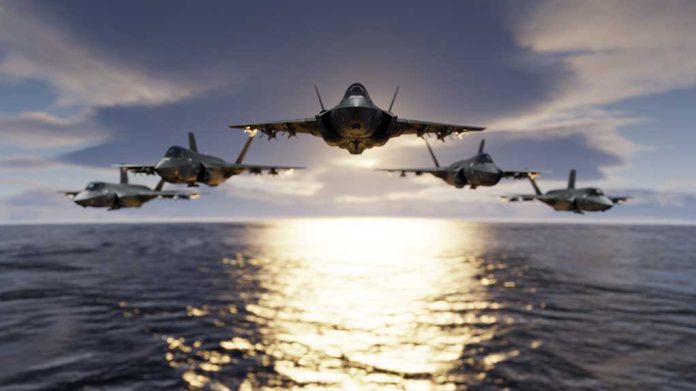
The U.S. Air Force is advancing its collaborative combat aircraft program, focusing on integrating drones as tactical wingmen for fighter planes.
At a Glance
- The U.S. Air Force will expedite drone testing as tactical wingmen in 2024.
- Collaborative Combat Aircraft (CCA) development includes F-35s and Next Generation Air Dominance (NGAD) platforms.
- NGAD program design is paused to reassess cost and technology integration.
- Boeing MQ-28 Ghost Bats are used in current operational testing.
Accelerating Drone Development in Nevada
The U.S. Air Force intensifies its drone development program with increasing focus on integrating them as tactical wingmen at its Nevada base. This move aids in advancing operational capabilities of both F-35s and the upcoming Next Generation Air Dominance platform. The plan includes enlisting designs from General Atomics and Anduril. Their drones have passed critical design reviews, moving closer to practical implementation in combat scenarios.
Collaborative Combat Aircraft (CCA) developments have the goal of being cost-effective and easily replaceable or ‘attritable.’ The costs are approximately $20 million to $27 million per unit, significantly less than the price of an F-35. This financial strategy intends to offer a budget-savvy option amidst evolving military needs.
The US Air Force recently awarded contracts to five vendors for the autonomy software that will control future drone wingmen, but is keeping details under wraps due to the sensitivity of the technology, service officials said today. https://t.co/eXTynWa6dV
— AirPower 2.0 (MIL_STD) (@AirPowerNEW1) July 29, 2024
Future of Air Dominance Programs
The Air Force’s future programs include re-evaluation of its next-generation air dominance designs and strategies. The Next Generation Air Dominance program, initially intended to replace the F-22 Raptor, temporarily pauses to reassess in light of financial and technological considerations. The venture prioritizes an optimal balance between crewed and uncrewed aircraft within its service’s capabilities.
“We are looking at what we need in order to achieve air superiority in a manner consistent with the increased threat, the changing character of war in the most cost- and combat-effective way,” said Secretary of the Air Force, Frank Kendall.
Kendall emphasizes aligning the cost of these programs with existing and evolving challenges. A strategic approach involves pursuing only the necessary attributes yet striking a balance between sophisticated capabilities and affordability.
CCA: Everything you need to know about the US military’s drone wingman effort [VIDEO] https://t.co/1wuinxEy4g
— Breaking Defense (@BreakingDefense) September 6, 2024
The Path to Integration and Testing
The Air Force’s experimental unit at Nellis Air Force Base embarks on testing with an increased number of drones. These initiatives are set to offer ample opportunities for experimentation, aiming for operational fielding by the decade’s end. General Atomics and Anduril are poised to fly their advanced prototypes, providing further insights into the combat integration potential.
“One thing that I recently did was approve some additional CCA purchases to equip the experimental operations unit in order to enable that experimentation to happen using real assets,” said Andrew Hunter, Air Force acquisition chief.
Investment into this technological advancement ensures that the Air Force remains on course with its streamlined commitment to modernize without compromising on cost efficiency. There lies a strong emphasis on tackling the financial challenges that come with simultaneous modernization programs.
Sources:
- https://www.defensenews.com/air/2023/12/30/new-in-2024-air-force-plans-autonomous-flight-tests-for-drone-wingmen/
- https://defensescoop.com/2024/09/27/air-force-next-generation-aircraft-programs-ngad-ngas-cca/
- https://breakingdefense.com/2024/07/air-force-requests-more-money-for-drone-wingmen-effort/
- https://dnyuz.com/2024/11/13/air-force-ordering-more-robot-wingmen-for-its-experimentation-unit/










